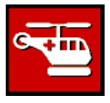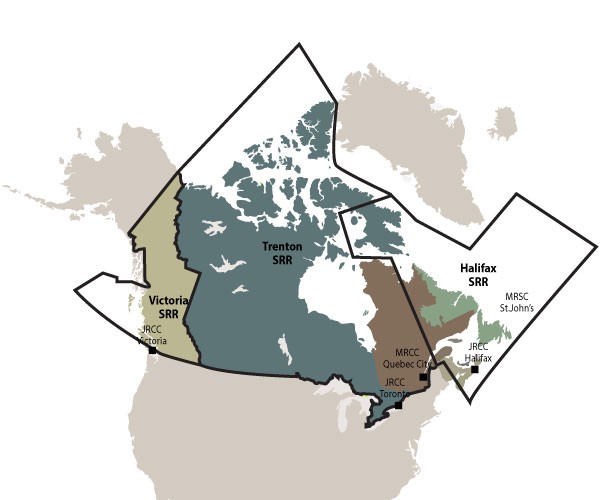Search and Rescue program information
The Canadian Coast Guard is responsible for maritime search and rescue services on federally controlled waterways. Along with our partners, we assist people, vessels and aircrafts that are in imminent danger. Our main objective is to save 100% of lives at risk. Search and rescue services include:
- response units trained to respond to and assist in maritime and aeronautical incidents
- alerting and communication services via Marine Communications Traffic Services
- coordinating operations through 3 joint rescue coordination centres and 2 maritime rescue sub-centres
Each year, the Coast Guard responds to over 6,000 calls for marine assistance. On an average day, we coordinate the response to 19 search and rescue incidents, assist 68 people and save 18 lives.
Area of responsibility
Canada has one of the world’s most diverse, large and challenging areas of search and rescue responsibility. This area, as assigned by international conventions, encompasses 18 million square kilometres of land and water, and extends from the:
- US border to the North Pole
- Atlantic Ocean to 30 degrees west longitude
- Pacific Ocean to about 600 nautical miles west of Vancouver Island
This area includes the longest coastline in the world.
Cooperative efforts
An effective search and rescue system depends greatly on the initial and timely action from the local citizen up to and including federal resources.
Depending on the incident, there are different roles and responsibilities for:
- municipalities
- other organizations
- federal departments
- provinces and territories
- Canadian Coast Guard Auxiliary
- dedicated volunteer associations
They all work together to provide search and rescue services across the nation.
National search and rescue framework
The national search and rescue framework operates as a joint effort between the 3 groups.



To effectively respond to Canada’s search and rescue needs, the Canadian area of responsibility was divided into 3 search and rescue regions:
- Halifax
- Victoria
- Trenton

Map of Canada showing 3 search and rescue regions.
Map description
- Victoria SRR includes British Columbia and Yukon, with a joint rescue coordination centre in Victoria, British Columbia.
- Trenton SRR includes:
- Alberta
- Ontario
- Manitoba
- Saskatchewan
- western Quebec
- Northwest Territories
- central and western Nunavut
It has a joint rescue coordination centre in Trenton, Ontario and a maritime rescue sub-centre in Quebec City, Quebec.
- Halifax SRR includes:
- Nova Scotia
- New Brunswick
- eastern Quebec
- eastern Nunavut
- Prince Edward Island
- Newfoundland and Labrador
It has a joint rescue coordination centre in Halifax, Nova Scotia and a maritime rescue sub-centre in St. John’s, Newfoundland and Labrador.
Coordination and response
We work with the Department of National Defence and the Canadian Armed Forces to operate joint rescue coordination centres in each search and rescue region. These centres:
- operate 24 hours a day, all year
- plan, coordinate, conduct and control search and rescue operations
- are jointly staffed by armed forces aeronautical and seagoing coast guard search and rescue mission coordinators
We also operate maritime rescue sub-centres in Quebec City, Quebec, and St. John’s, Newfoundland and Labrador, to further assist with local rescue coordination efforts.
Response
The Canadian Coast Guard has 43 search and rescue life boat stations, including a dedicated hovercraft station, and 26 seasonal inshore rescue boats. They maintain a 30-minute or less reaction time standard during their operational season. Our operational season is determined by the presence of ice and navigation season of maritime users.
In addition to these dedicated resources, all other coast guard vessels support search and rescue operations. They have a 1 hour reaction time standard for search and rescue calls, and prioritize search and rescue over all other activities.
Gallery
- Date modified:


